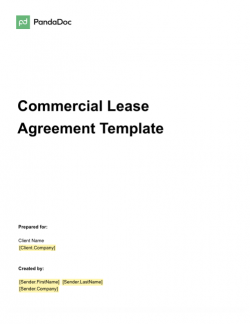Maryland Commercial Lease Agreement
Commercial leases in Maryland are used to lease properties for business purposes. As such, there are several legal terms and clauses that landlords should know about. Read all about the laws and legal disclosures before you draw up a Maryland commercial lease agreement.

Security Deposit Limits and Handling
- There aren’t specific laws regarding commercial security deposits in Maryland.
- Landlords can set any limit to the security deposit and hold it with other funds in any account. Some landlords follow the residential limits of two months’ rent being the security deposit.
- The lessor doesn’t need to bear any interest or pay it to the tenant on the security deposit.
- There’s no law stating when the lessors must return the deposit. However, many follow the residential period, which is within 45 days of terminating the lease.
Right of Entry for Inspections and Repairs
- The right of entry for inspection is mostly the same for commercial and residential leases.
- The landlord must give at least 24 hours notice when they want to enter the property to conduct inspections. Inspections don’t need the lessee’s permission, unlike if the landlord otherwise intends to access the premises.
- Landlords are also allowed self-help by the CSA (Court of Special Appeals). It allows them the right of possession and entry if the tenant is found in default, this term is present in the agreement, and the re-possession is peaceful.
- Most commercial leases require the lessee to be responsible for any repairs. The landlord has to ensure the property is in good condition at the start of the agreement. For the duration of it, the tenant must conduct any repairs.
- Depending on whether it’s a net or gross lease, the landlord might still conduct repairs. In this case, the tenant must reimburse them for the repairs, or it’s included in the rent.
Environmental Responsibilities
- Maryland adopted a stringent International Greenhouse Construction Code. It governs the emission and removal of greenhouse gases in covered buildings.
- Many commercial properties fall under covered buildings. The owner must achieve a 20% net reduction of greenhouse gas emissions from 2023 to 2030. The idea is to gradually lessen it until they reach 0% emissions by 2040.
- Landlords must include clauses regarding sharing greenhouse gas data. It ensures they don’t break the law due to the tenant’s ignorance or negligence.
- Tenants must also abide by federal, state, or local environmental regulations.
Notice Requirements
- There are no specific laws rewarding commercial notice periods.
- It’s common for landlords to add a 30 to 90-day notice period, depending on the agreement type.
- Leases that continue longer than a week generally have a 30 to 60-day notice, while year-to-year leases have 90 days. Some leases might have a 180-day notice.
- Notices must be in writing and delivered by hand or through a certified mail service.
Include Required Disclosures
Besides the critical Greenhouse Gas clause, there’s only one legal disclosure in this document:
- Lead-Based Paint: Landlords must say whether lead-based paint is present if the building is older than 1978. They must also provide information on the hazards of this paint.

